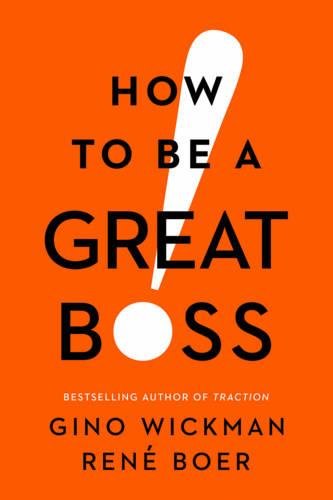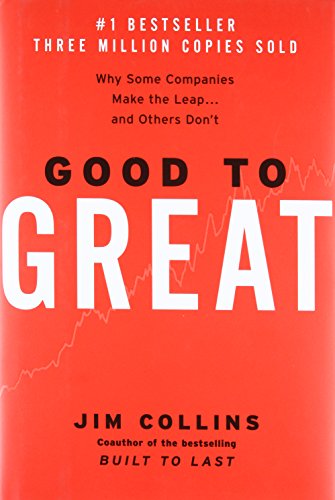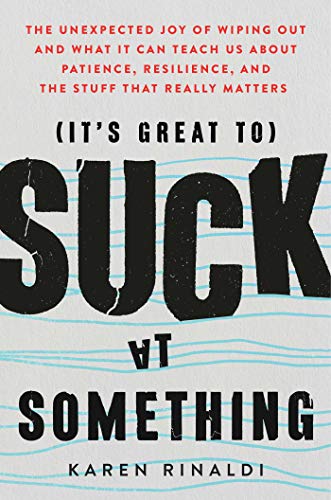Top 10 best good to great
When you looking for good to great, you must consider not only the quality but also price and customer reviews. But among hundreds of product with different price range, choosing suitable good to great is not an easy task. In this post, we show you how to find the right good to great along with our top-rated reviews. Please check out our suggestions to find the best good to great for you.
When you looking for good to great, you must consider not only the quality but also price and customer reviews. But among hundreds of product with different price range, choosing suitable good to great is not an easy task. In this post, we show you how to find the right good to great along with our top-rated reviews. Please check out our suggestions to find the best good to great for you.
Best good to great
1. How to Be a Great Boss
Feature
How to Be a Great BossDescription
Studies have repeatedly shown that the majority of employees are disengaged at work. But it doesnt have to be this way. Often, the difference between a group of indifferent employees and a fully engaged team comes down to one simple thinga great boss.
In How to Be a Great Boss, Gino Wickman and Rene Boer present a straightforward, practical approach to help bosses at all levels of an organization get the most from their people. They share time-tested tools that have worked for more than 30,000 bosses in every industry. You can learn to be a great bossand dramatically improve both your organizations performance and your teams excitement about their work.
In this book you will discover:
How to surround yourself with great people
How to make more effective use of your time
The difference between leadership and management and why theyre equally important
The five leadership practices and five management practices of all great bosses
How to create accountability
How to develop productive, relationships with each of your people
How to deal with direct reports that dont meet your expectations
How to Be a Great Boss provides practical tools that you can apply immediately with your people, allowing you to focus on improving and growing your organization and truly enjoy what you do.
2. Good to Great: Why Some Companies Make the Leap and Others Don't
Feature
Good to Great, Built to Last, Great by ChoiceDescription
The Challenge:
Built to Last, the defining management study of the nineties, showed how great companies triumph over time and how long-term sustained performance can be engineered into the DNA of an enterprise from the verybeginning.
But what about the company that is not born with great DNA? How can good companies, mediocre companies, even bad companies achieve enduring greatness?
The Study:
For years, this question preyed on the mind of Jim Collins. Are there companies that defy gravity and convert long-term mediocrity or worse into long-term superiority? And if so, what are the universal distinguishing characteristics that cause a company to go from good to great?
The Standards:
Using tough benchmarks, Collins and his research team identified a set of elite companies that made the leap to great results and sustained those results for at least fifteen years. How great? After the leap, the good-to-great companies generated cumulative stock returns that beat the general stock market by an average of seven times in fifteen years, better than twice the results delivered by a composite index of the world's greatest companies, including Coca-Cola, Intel, General Electric, and Merck.
The Comparisons:
The research team contrasted the good-to-great companies with a carefully selected set of comparison companies that failed to make the leap from good to great. What was different? Why did one set of companies become truly great performers while the other set remained only good?
Over five years, the team analyzed the histories of all twenty-eight companies in the study. After sifting through mountains of data and thousands of pages of interviews, Collins and his crew discovered the key determinants of greatness -- why some companies make the leap and others don't.
The Findings:
The findings of the Good to Great study will surprise many readers and shed light on virtually every area of management strategy and practice. The findings include:
- Level 5 Leaders: The research team was shocked to discover the type of leadership required to achieve greatness.
- The Hedgehog Concept: (Simplicity within the Three Circles): To go from good to great requires transcending the curse of competence.
- A Culture of Discipline: When you combine a culture of discipline with an ethic of entrepreneurship, you get the magical alchemy of great results. Technology Accelerators: Good-to-great companies think differently about the role of technology.
- The Flywheel and the Doom Loop: Those who launch radical change programs and wrenching restructurings will almost certainly fail to make the leap.
Some of the key concepts discerned in the study, comments Jim Collins, "fly in the face of our modern business culture and will, quite frankly, upset some people.
Perhaps, but who can afford to ignore these findings?
3. Good to Great and the Social Sectors: Why Business Thinking is Not the Answer
Feature
Great product!Description
Jim Collins Answers the Social Sector with a Monograph to Accompany Good to Great. 30-50% of those who bought Good to Great work in the Social Sector.- This monograph is a response to questions raised by readers in the social sector. It is not a new book.
- Jim Collins wants to avoid any confusion about the monograph being a book by limiting its distribution to online retailers.
- Based on interviews and workshops with over 100 social sector leaders.
- The difference between successful organizations is not between the business and the social sector, the difference is between good organizations and great ones.
4. Turning the Flywheel: A Monograph to Accompany Good to Great
Description
A companion guidebook to the number-one bestselling Good to Great, focused on implementation of the flywheel concept, one of Jim Collins most memorable ideas that has been used across industries and the social sectors, and with startups.
The key to business success is not a single innovation or one plan. It is the act of turning the flywheel, slowly gaining momentum and eventually reaching a breakthrough. Building upon the flywheel concept introduced in his groundbreaking classic Good to Great, Jim Collins teaches readers how to create their own flywheel, how to accelerate the flywheels momentum, and how to stay on the flywheel in shifting markets and during times of turbulence.
Combining research from his Good to Great labs and case studies from organizations like Amazon, Vanguard, and the Cleveland Clinic which have turned their flywheels with outstanding results, Collins demonstrates that successful organizations can disrupt the world around themand reach unprecedented successby employing the flywheel concept.
5. Built to Last: Successful Habits of Visionary Companies (Harper Business Essentials)
Feature
HarperBusinessDescription
Drawing upon a six-year research project at the Stanford University Graduate School of Business, James C. Collins and Jerry I. Porras took eighteen truly exceptional and long-lasting companies and studied each in direct comparison to one of its top competitors. They examined the companies from their very beginnings to the present day -- as start-ups, as midsize companies, and as large corporations. Throughout, the authors asked: "What makes the truly exceptional companies different from the comparison companies and what were the common practices these enduringly great companies followed throughout their history?"
Filled with hundreds of specific examples and organized into a coherent framework of practical concepts that can be applied by managers and entrepreneurs at all levels, Built to Last provides a master blueprint for building organizations that will prosper long into the 21st century and beyond.
6. The Good Girl's Guide to Great Sex: (And You Thought Bad Girls Have All the Fun)
Feature
The Good Girl s Guide to Great Sex And You Thought Bad Girls Have All the FunDescription
Billions of people have had sex. Far fewer have made love. In the Good Girl's Guide to Great Sex, author Sheila Wray Gregoire helps women see how sexual intimacy was designed to be physically stupendous but also incredibly intimate.Whether you're about to walk down the aisle or you've been married for decades, The Good Girl's Guide to Great Sex will lead you on a wonderful journey of discovery towards the amazing sex life God designed you for.
With humor, research, and lots of anecdotes, author Sheila Wray Gregoire helps women see how our culture's version of sex, which concentrates on the physical above all else, makes sex shallow. God, on the other hand, intended sex to unite us physically, emotionally, and spiritually. Gregoire walks through these three aspects of sex, showing how to make each amazing, and how to overcome the roadblocks in each area we often encounter.
Drawing on survey results from over 2,000 people, she also includes lots of voices from other Good Girls, giving insight into how other women have learned to truly enjoy sex in marriage.
7. Good to Great in God's Eyes: 10 Practices Great Christians Have in Common
Description
Now poised to reach a new readership, Good to Great in God's Eyes shows how Christians can honor God with lives of great faith and excellent work. Believers become great in God's eyes by applying the ten common characteristics of great Christians:- think great thoughts
- read great books
- pursue great people
- dream great dreams
- pray great prayers
- take great risks
- make great sacrifices
- enjoy great moments
- empower great people
- develop great habits
Using Scripture, personal stories, and examples from Christians who left a lasting legacy, bestselling author Chip Ingram offers practical steps for becoming great in all areas of life, in spiritual growth, family, relationships, and career. Includes a foreword by Bob Buford and helpful discussion questions to facilitate group or individual study.
8. Good Questions: Great Ways to Differentiate Mathematics Instruction in the Standards-Based Classroom
Description
Now in its Third Editionexpanded with over 100 new tasks and questionsthis bestselling resource helps experienced and novice teachers to effectively and efficiently differentiate mathematics instruction in grades K8. Math education expert Marian Small shows teachers how to get started and become expert at using two powerful and universal strategies: Open Questions and Parallel Tasks. This volume includes key changes that will make it easier for teachers to use in all quality state standards environments, including direct links to Common Core content standards and standards for mathematical practice. Classroom examples, many new for this edition, are provided at each grade band: K2, 35 and 68. Along with each example, the text describes how teachers can evoke productive conversations that meet the needs of a broad range of learners.
Book Features:
- Chapters organized around Common Core headings.
- Continued attention to big ideas in math.
- Many new questions that teachers can adapt or use as is.
- Teaching tips and task variations.
- A template to help users build new tasks.
- Guidance for using follow-up questions to create a rich math classroom.
PROFESSIONAL DEVELOPMENT: Visit Marian Smalls website onetwoinfinity.ca for in-person and online professional development.
Praise for Previous Editions!
A must for an educator who is serious about reaching more students more often and achieving more positive results.
Resources for the Mathematics Educator
"This is a valuable book for mathematics teachers, teacher educators, and faculty involved in differentiated instruction."
Choice
"This book is a great resource, with realistic applications to current instruction and tips for creating solid math discourse with your students."
Mathematics: Teaching in the Middle School
"The glossary is a great resource for math language, and the index of big ideas provides a snapshot of focus points. . . . I highly recommend this user-friendly resource for all mathematics teachers."
Teaching Children Mathematics
9. More Good Questions: Great Ways to Differentiate Secondary Mathematics Instruction
Description
We know that Differentiated Instruction (DI) helps all students to learn. Yet DI challenges teachers, and nowhere more than in mathematics. In this new book, written specifically for secondary mathematics teachers, the authors cut through the difficulties with two powerful and universal strategies that teachers can use across all math content: Open Questions and Parallel Tasks. Showing teachers how to get started and become expert with these strategies, this book also demonstrates how to use more inclusive learning conversations to promote broader student participation. Strategies and examples are organized around Big Ideas within the National Council of Teachers of Mathematics (NCTM) content strands. With particular emphasis on Algebra, chapters also address Number and Operations, Geometry, Measurement, and Data Analysis and Probability, with examples included for Pre-Calculus.
To help teachers differentiate math instruction with less difficulty and greater success, this resource:
- Underscores the rationale for differentiating secondary math instruction.
- Provides specific examples for secondary math content.
- Describes two easy-to-implement strategies designed to overcome the most common DI problems that teachers encounter.
- Offers almost 300 questions and tasks that teachers and coaches can adopt immediately, adapt, or use as models to create their own, along with scaffolding and consolidating questions.
- Includes Teaching Tips sidebars and an organizing template at the end of each chapter to help teachers build new tasks and open questions.
- Shows how to create a more inclusive classroom learning community with mathematical talk that engages participants from all levels.
PROFESSIONAL DEVELOPMENT: Visit Marian Smalls website onetwoinfinity.ca for in-person and online professional development.
10. It's Great to Suck at Something: The Unexpected Joy of Wiping Out and What It Can Teach Us About Patience, Resilience, and the Stuff that Really Matters
Description
Discover how the freedom of sucking at something can help you build resilience, embrace imperfection, and find joy in the pursuit rather than the goal.What if the secret to resilience and joy is the one thing weve been taught to avoid?
When was the last time you tried something new? Something that wont make you more productive, make you more money, or check anything off your to-do list? Something youre really, really bad at, but that brought you joy?
Odds are, not recently.
As a sh*tty surfer and all-around-imperfect human Karen Rinaldi explains in this eye-opening book, we live in a time of aspirational psychoses. We humblebrag about how hard we work and we prioritize productivity over play. Even kids dont play for the sake of playing anymore: theyre building blocks to build the ideal college application. But were all being had. Were told to be the best or nothing at all. Were trapped in an epic and farcical quest for perfection. We judge others on stuff we cant even begin to master, and its all making us more anxious and depressed than ever. Worse, were not improving on what really matters.
This book provides the antidote. (Its Great to) Suck at Something reveals that the key to a richer, more fulfilling life is finding something to suck at. Drawing on her personal experience sucking at surfing (a sport shes dedicated nearly two decades of her life to doing without ever coming close to getting good at it) along with philosophy, literature, and the latest science, Rinaldi explores sucking as a lost art we must reclaim for our health and our sanity and helps us find the way to our own riotous suck-ability. She draws from sources as diverse as Anthony Bourdain and surfing luminary Jaimal Yogis, Thich Nhat Hanh, and Jean-Paul Sartre, among many others, and explains the marvelous things that happen to our mammalian brains when we try something new, all to discover what shes learned firsthand: it is great to suck at something. Sucking at something rewires our brain in positive ways, helps us cultivate grit, and inspires us to find joy in the process, without obsessing about the destination. Ultimately, it gives you freedom: the freedom to suck without caring is revelatory.
Coupling honest, hilarious storytelling with unexpected insights, (Its Great to) Suck at Something is an invitation to embrace our shortcomings as the very best of who we are and to open ourselves up to adventure, where we may not find what we thought we were looking for, but something way more important.









